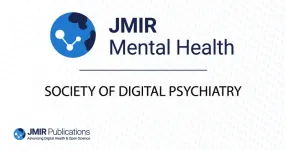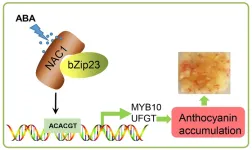New machine learning framework for more accurate plant disease diagnosis
Researchers have developed a new neural network that overcomes the problems of image-based plant disease detection
2023-04-24
(Press-News.org)
Plant diseases pose a significant threat to nations across the globe, owing to the financial burden they impose and the impact they have on food security. Healthy crops sustain millions of livelihoods, and accurate diagnosis of plant diseases allows for timely interventions to ensure sufficient crop production with minimal yield loss. Traditional approaches to disease recognition typically follow two paths. The first relies on crop inspection by trained experts, while the second leverages neural networks and image-processing. However, both options have their limitations. While trained experts provide their opinions following an error-prone and time-consuming manual inspection, conventional image-processing methods extract superficial information and need prerequisite training for better predictions. This implies that it is difficult to make consistent predictions as the complexity of information increases.
In this regard, neural networks–collections of algorithms that detect underlying relationships in data–have delivered promising results in plant disease classification. The caveat is the lack of adequate training data. Good data collection is possible in controlled environments but nontrivial in the real world. In the field, diseases may be rare or not easily observed. Furthermore, disease samples may have complex backgrounds, varying shapes, and occlusions. Neural network-based disease classifiers are also limited in their ability to apply knowledge to new datasets after training.
Now, a team of researchers has developed a new and relatively simple neural network called the ‘Multi-Representation Subdomain Adaptation Network with Uncertainty Regularization for Cross-Species Plant Disease Classification’ (MSUN), that accurately classifies plant diseases in natural settings. To do so they applied a transfer learning technique called unsupervised domain adaptation (UDA) to smoothen the process of plant disease identification. The study was led by Associate Professor Xijian Fan from Nanjing Forestry University and was published in Plant Phenomics. This paper was made available online on 28 March 2023.
Associate Prof. Fan, who is also the corresponding author of the study, explains, "UDA allowed our model to apply what it had learned during training to a different unannotated dataset. We trained MSUN to classify plant diseases in the controlled environment of a laboratory. It can now use UDA to classify plant diseases in complex field environments."
The team's approach to leveraging UDA in plant disease classification represents a paradigm shift as it overcomes the shortcomings in current UDA-based approaches. First, the images collected in the field are complex–they have several leaves, odd camera shooting angles, and may be blurred. UDA-based classifiers are expected to process this confounding information for accurate disease classification. Second, these classifiers are unable to make predictions when tackling plants afflicted with varying disease states, infections at different time points, or at multiple sites. Third, the classifiers face a significant challenge when similar disease manifestations may occur. This happens when multiple disease agents infect a single plant species or when a single disease agent infects multiple plant species.
"MSUN is a more capable disease classifier when learning the overall structure of plant-disease features. Also, it captures more details from the information it receives," says Associate Prof. Fan about the new method's advantages. The study found that MSUN was not hampered by the discrepancy that occurs when the same information is collected in a controlled environment versus a field setting. Importantly, the group validated MSUN's disease classification accuracy using multiple complex plant-disease datasets. When tested using data from the PlantDoc, Plant-Pathology, Corn-Leaf-Diseases, and Tomato-Leaf-Diseases databases, MSUN excelled and outperformed the current crop of classifiers!
The group is optimistic about MSUN's prospects, given its ability to process challenging datasets. They are confident that it can overcome the inherent uncertainty of current disease classifiers, and that it will aids future plant pathology research by providing significant insights into the problems of disease recognition.
###
Reference
Authors
Xinlu Wu1, Xijian Fan1, Peng Luo2,3, Sruti Das Choudhury4, Tardi Tjahjadi5, and Chunhua Hu1、
Affiliations
1College of Information Science and Technology, Nanjing Forestry University, China.
2Institute of Forest Resource Information Techniques, Chinese Academy of Forestry, China.
3Key Laboratory of Forestry Remote Sensing and Information System, National Forestry and Grassland Administration, China.
4Department of Computer Science and Engineering, University of Nebraska-Lincoln, USA
5School of Engineering, University of Warwick, UK
END
ELSE PRESS RELEASES FROM THIS DATE:
2023-04-24
Researchers have developed a new method to distinguish between cancerous and healthy stem cells and progenitor cells from samples of patients with acute myeloid leukaemia (AML), a disease driven by malignant blood stem cells that have historically been difficult to identify. The findings, published today in the journal Cell Stem Cell, pave the way for the development of new techniques to predict whether patients will respond to chemotherapy.
AML is a type of cancer characterised by the rapid growth and accumulation of abnormal white blood cells. ...
2023-04-24
Kamaljeet Sanghera, Executive Director, Institute for Digital InnovAtion (IDIA), Research and Innovation Initiatives; Professor, Information Sciences and Technology, received funding to design and deliver a pilot of a summer, hands-on experience for 20 high school students.
Sanghera will leverage IBM artificial intelligence (AI) kits to help the students gain technical skills, knowledge, and abilities in AI and an understanding of its ethical and social impact.
Sanghera received $150,000 from Trenchant Analytics, LLC, on a subaward from the ...
2023-04-24
(Toronto, April 24, 2023) JMIR Publications and the Society of Digital Psychiatry (SODP) have announced a new partnership aimed at advancing research in the field of digital mental health. This collaboration will focus on supporting education and knowledge sharing in the fast moving world of digital psychiatry and establishing priorities for the space, including identifying current gaps in knowledge and determining areas for future study, with particular emphasis on addressing disparities in access to care.
The partnership brings together JMIR Publications, a leading open-access publisher of scholarly journals on digital health, ...
2023-04-24
Exploring the upstream transcription factors or proteins interacting with MdMYB10 is an important way to enrich the complex network of anthocyanin synthesis. In this study, the upstream regulatory gene MdNAC1 of MdMYB10 was selected through yeast one hybridization experiments, and EMSA and LUC experiments showed that MdNAC1 can transcriptionally activate MdMYB10. The transformation experiments in apple callus and apple fruit showed that MdNAC1 significantly promoted the accumulation of anthocyanins. At the same time, researchers have found that MdNAC1 can interact with MdbZIP23 ...
2023-04-24
Problems with the brain’s ability to ‘prune’ itself of unnecessary connections may underlie a wide range of mental health disorders that begin during adolescence, according to research published today.
The findings, from an international collaboration, led by researchers in the UK, China and Germany, may help explain why people are often affected by more than one mental health disorder, and may in future help identify those at greatest risk.
One in seven adolescents (aged 10-19 years old) worldwide experiences mental health disorders, according to the World Health Organization (WHO). Depression, anxiety and behavioural disorders, such as ...
2023-04-24
About The Study: In this study that included 167,000 non-hospitalized patients, neutralizing monoclonal antibody (nMAb) treatment for COVID-19 was safe and associated with reductions in emergency department visits, hospitalization, and death, although it was not associated with reduced risk of hospitalization during the Omicron BA.1 epoch. These findings suggest that targeted risk stratification strategies may help optimize future nMAb treatment decisions.
Authors: Brian Anderson, M.D., of the MITRE Corporation in Bedford, Massachusetts, is the corresponding author.
To access the embargoed study: Visit our For The Media website ...
2023-04-24
Researchers at Karolinska Institutet in Sweden have investigated how preterm birth and foetal growth are related to the risk of atrial fibrillation up to middle-age. The study, which is published in JAMA Pediatrics, shows that being born preterm or large for gestational age was associated with increased risks of atrial fibrillation later in life. Being small for gestational age at birth was only associated with an increased risk of atrial fibrillation up to the age of 18.
The incidence of atrial fibrillation in the young has increased over the past few decades, from low levels.
“Atrial fibrillation at a young age may involve a heavy socioeconomic burden for the affected ...
2023-04-24
CAMBRIDGE, MA -- Getting vaccines to people who need them isn’t always easy. Many vaccines require cold storage, making it difficult to ship them to remote areas that don’t have the necessary infrastructure.
MIT researchers have come up with a possible solution to this problem: a mobile vaccine printer that could be scaled up to produce hundreds of vaccine doses in a day. This kind of printer, which can fit on a tabletop, could be deployed anywhere vaccines are needed, the researchers say.
“We could someday ...
2023-04-24
A team of physicists has illuminated certain properties of quantum systems by observing how their fluctuations spread over time. The research offers an intricate understanding of a complex phenomenon that is foundational to quantum computing—a method that can perform certain calculations significantly more efficiently than conventional computing.
“In an era of quantum computing it’s vital to generate a precise characterization of the systems we are building,” explains Dries Sels, an assistant ...
2023-04-24
CORVALLIS, Ore. – During the last ice age, massive icebergs periodically broke off from an ice sheet covering a large swath of North America and discharged rapidly melting ice into the North Atlantic Ocean around Greenland, triggering abrupt climate change impacts across the globe.
These sudden episodes, called Heinrich Events, occurred between 16,000 and 60,000 years ago. They altered the circulation of the world’s oceans, spurring cooling in the North Atlantic and impacting monsoon rainfall around the world.
But ...
LAST 30 PRESS RELEASES:
[Press-News.org] New machine learning framework for more accurate plant disease diagnosis
Researchers have developed a new neural network that overcomes the problems of image-based plant disease detection








